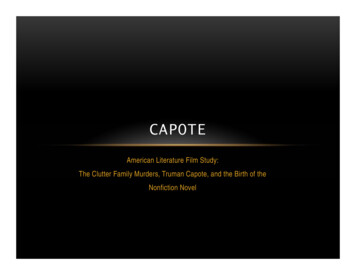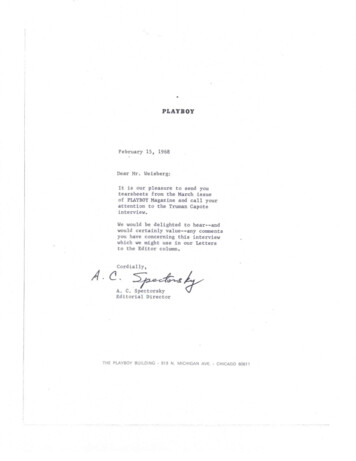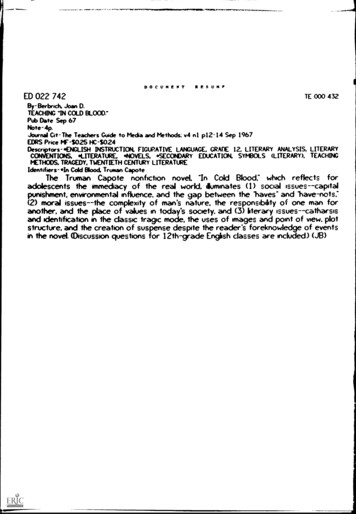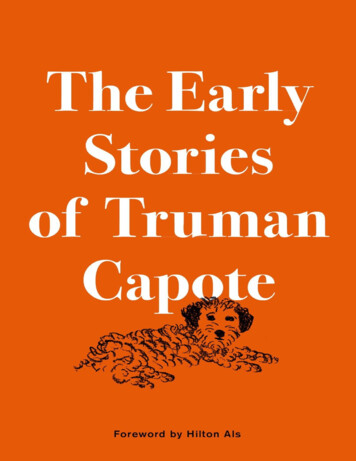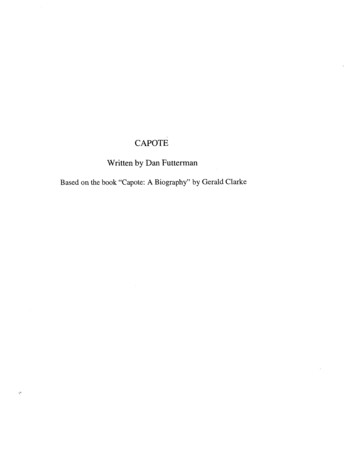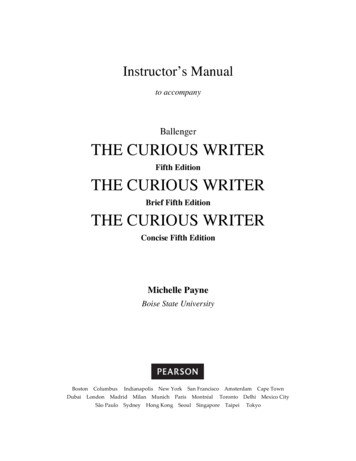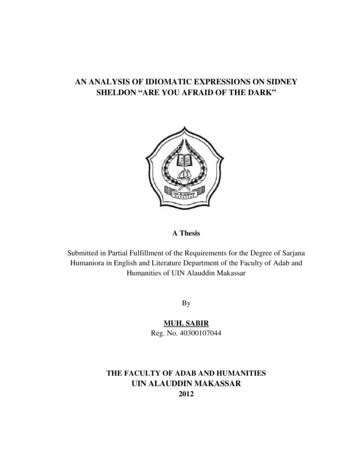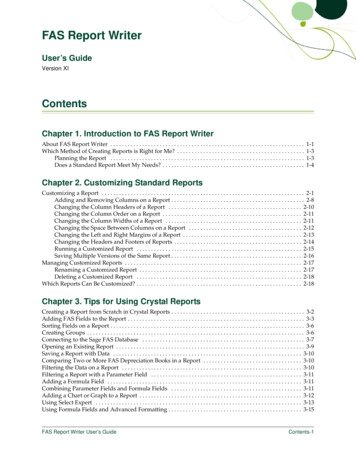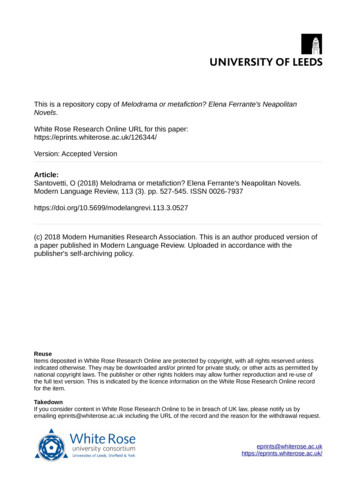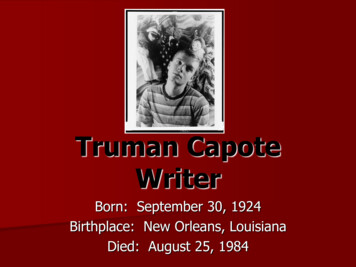
Transcription
Truman CapoteWriterBorn: September 30, 1924Birthplace: New Orleans, LouisianaDied: August 25, 1984
The author of Breakfast at Tiffany’s (1958)and In Cold Blood (1966), Truman Capotewas a successful writer whose flamboyantpublic persona sometimes overshadowedhis literary reputation.
Capote spent most of his early years inMonroeville, Alabama, and then moved toNew York City in 1933. Capote droppedout of school and went to work in theoffices of The New Yorker while writingstories for other publications.
His first novel, Other Voices, Other Rooms(1948), was a critical hit and Capotequickly became a star among New York’swriters.
During the 1960s he enjoyed both literarysuccess and regular media attention,earning a reputation as a gossiping partierwith a quick and barbed wit. Theinternational success of In Cold Bloodfurthered his celebrity status and madehim rich. Capote became a familiar faceon TV (especially on Johnny Carson’sshow), instantly recognized for his smallframe and slow, lisping speech.
By the end of the 1970s, Capote’s healthdeteriorated due to alcohol and drugabuse. Capote wrote essays, novels,stories and screenplays, and adaptedsome of his works for television and stage.
Last Years In the late 1970s, Capote was in and out ofrehab clinics, and news of his variousbreakdowns frequently reached the public. In1978, talk show host Stanley Siegal did a liveon-air interview with Capote, who, in anextraordinarily intoxicated state, confessed thathe might kill himself. Capote died in LosAngeles, California, on August 25, 1984, at age59. According to the coroner's report the causeof death was “ liver disease complicated byphlebitis and multiple drug intoxication".
Friendship with Harper Lee Capote was a lifelong friend of hisMonroeville neighbor Harper Lee, and hebased the character of Idabell in OtherVoices, Other Rooms on her. He in turnwas the inspiration for Dill Harris in her1960 bestselling novel To Kill aMockingbird.
In an interview with Lawrence Grobel,Capote recalled his childhood, “Mr. andMrs. Lee, Harper Lee’s mother and father,lived very near. Harper Lee was my bestfriend. Did you ever read her book, To Killa Mockingbird? I’m a character in thatbook which takes place in the same smalltown in Alabama where we both lived.”
Controversy It was rumored that Capote had writtenportions of her novel; some said heghosted (one who writes for and givescredit of authorship to another) the entirenovel. At least one person – Pear KazonBell, an editor at Harper’s – believed therumor was true. However, Capote wouldlikely have been much more aggressive inclaiming credit for the novel’s PulitzerPrize had he been the real author, sincehe never achieved a Pulitzer for his ownwork.
His persona was far more flamboyant thanhers, and their writing styles reflect thisdifference. A July 9, 1959 letter fromCapote to his aunt indicates that HarperLee did indeed write the entire bookherself.
His WorksCapote is credited with creating the nonfiction genre of the “true crime” novel. Works by Truman Capote – 1948:– 1949:– 1950:– 1951:– 1954:Other Voices, Other RoomsTree of Life, and Other StoriesLocal ColorThe Grass HarpHouse of Flowers
1956: The Muses are Heard1958: Breakfast at Tiffany’s1966: In Cold Blood1980: Music for Chameleons. This collection includesshort stories, a true murder tale, recollections of theauthor’s childhood, and “Conversation Portraits”describing time spent with Marilyn Monroe and a NewYork City Cleaning woman.– 1987: Answered Prayers: The Unfinished Novel––––
Truman Capoteand Harper LeeCapote withAlvin Dewey AndMrs. Dewey
Holcumb, Kansas aerial view 2008Holcomb remains primarily a farmingtown. On the outskirts of GardenCity, KS (much like how Marietta isJust outside of Atlanta), the townwas made famous by Capote. PeopleStill visit the town to see the ClutterHome and other cites that were thefocus of the investigation andCapote’s novel.
Bonnie Clutter’sBedroomThe caretaker’s houseThe Clutter Home TodayDining room of the homeThe Clutter House Basement
Capote’s style: In Cold BloodTakes credit for creating what he calls the“non-fiction novel”: depicts real eventsnarrated with techniques of fiction. Thenon-fiction novel is an otherwise looselydefined and flexible genre. Hints of this type of novel exist beforeCapote, but the non-fiction narrative, as itis now referred to, is considered to havebeen born with the publication of In Cold Blood.
A drawing of Jesusby Perry SmithRichard Hickock and Perry SmithPerry Smithtalks withTruman Capote
Capote’s style: In Cold Blood Takes credit for creating what he calls the “non-fiction novel”: depicts real events narrated with techniques of fiction. The non-fiction novel is an otherwise loosely-defined and flexible genre. Hints of this type of novel exist before
